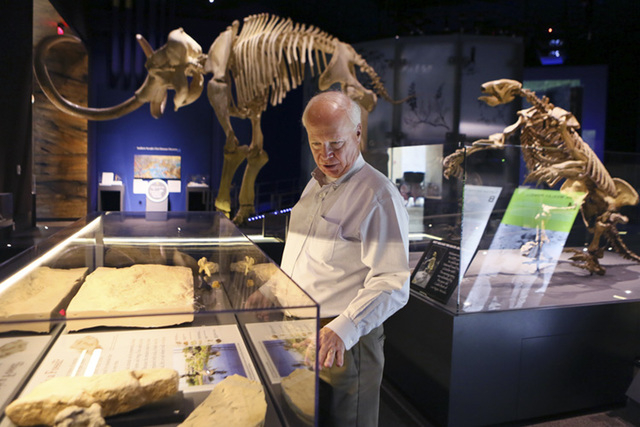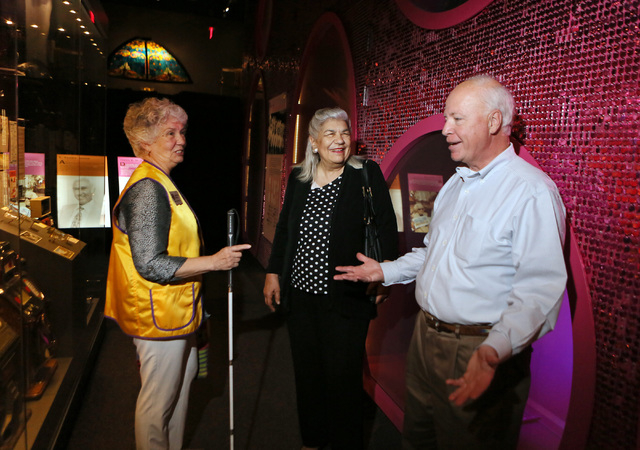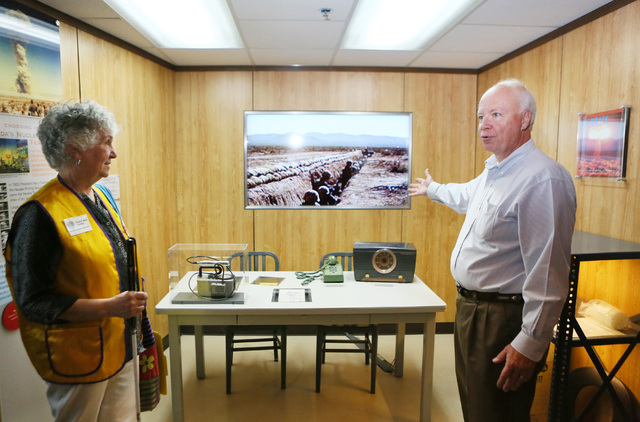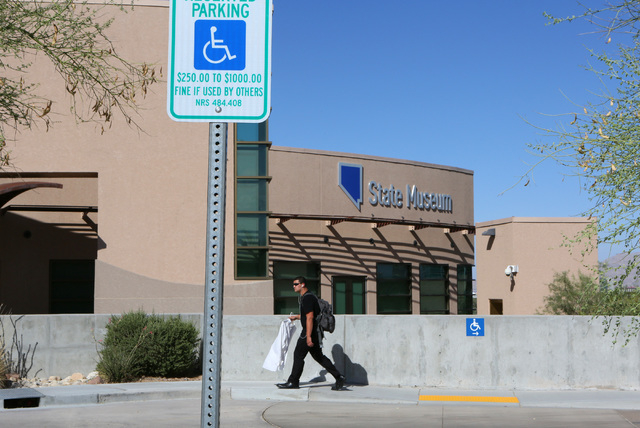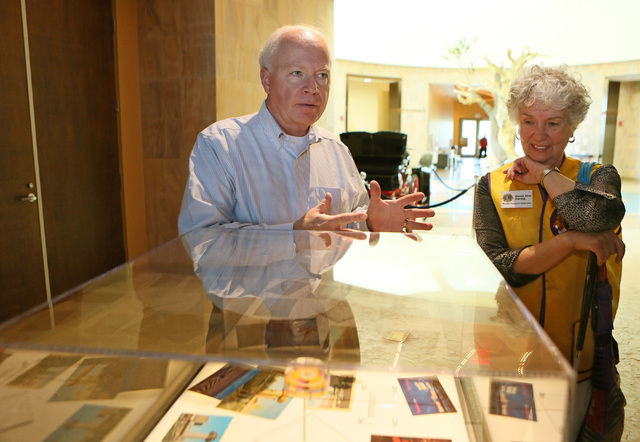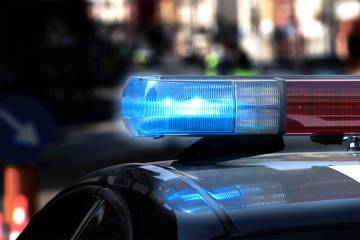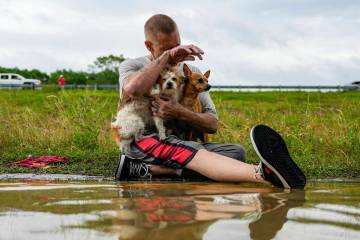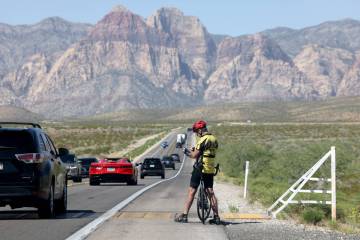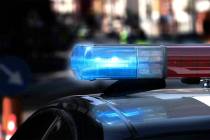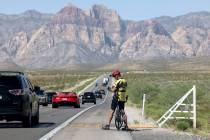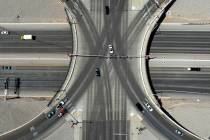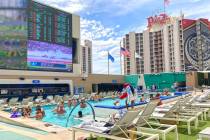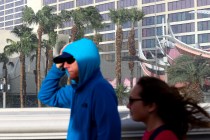Nevada State Museum creates user-friendly environment for disabled
About a year ago, officials at the Nevada State Museum at Springs Preserve learned from half a dozen visitors there were issues with the Americans With Disabilities Act, a civil rights act prohibiting discrimination against the disabled.
Some were clear cut, such as entrance doors too close together for a wheelchair to get through.
But there are more subtle concerns, such as what can be done with the exhibits to make them accessible to the vision- and hearing-impaired.
A recent walk through the museum with Director Dennis McBride, who is sensitive to ADA issues, showed the obvious. Some exhibits are the height of a bar, so high someone in a wheelchair couldn’t see it.
“It’s kind of an exciting challenge,” McBride said. “It would be foolish and mean-spirited to resist.”
Other exhibits depended on audio and visual explanations, but someone with limited vision or limited hearing is likely to be unable to see or hear.
ADA consultant Suzanne Thomas, who filed a complaint, might be expected to rip the museum officials. Think again.
She is delighted that state museum officials are planning to make the necessary changes so the museum is accessible to all. “They are making a lovely lemonade out of it,” she said.
Peter Barton, administrator of the Division of Museums and History, said after meeting with Thomas in January that the decision was made to overhaul the programming in the $51.5 million museum. He figured the fixes will cost more than $1 million and take up to 18 months.
Looking at desert animals or geology formations means little without some explanations about them. Maybe captions. Maybe an ear wand like some museums offer. Braille. Larger print.
In some places, captions will explain things to the deaf. In other cases, tactile exhibits will be created so the sight-impaired can see with their hands. Audio discs for the visually impaired will describe the exhibit.
There’s plenty of new technology today to make a difference.
“The matter of program access, as distinguished from physical barrier removal, is receiving a lot of attention nationwide, in museums and other public performance spaces,” Barton said. “While some might perceive this matter as troubling, I see it as a true opportunity for Nevada and our museums to take the lead in better serving every person who comes to visit.”
“We are moving aggressively,” Barton said. “We want to serve every customer.”
He said the primary focus now is addressing things such as large-print text and guides, tactile maps, Braille, and audio description. Those accommodations will mitigate perhaps 40 percent of the concerns. “Those improvements can be managed with resources we have available.”
Installing modified audio/video media, additional screens, and new text panels will come next and will have costs, but have not been evaluated and estimated at this time, Barton said.
An outside firm from California was hired for the design and construction of the exhibits. Barton said it’s premature to say whether the division will take any action to recover costs of redoing exhibits.
Some changes wouldn’t be that expensive. A flat but high exhibit could be propped up at an angle to make it readable for someone in a wheelchair.
“My sense, after over three decades in the business of visitor experience development in museums, is that we are over $1 million to reach a comfortable level of compliance for all visitors,” Barton said. “I expect to address that need during the 2015 legislative session. Beyond that I foresee improvements over time, with costs considered as we go, continuously addressing better access for all.”
He estimated it will take 12 to 18 months to address some of the major programming changes. “We’ll be making changes for years and years to come.”
“Another important result of this complaint is that the state has committed to not constructing any more facilities that are out of compliance with ADA and 504. That is huge,” Thomas said.
Her mention of 504 is a reference to a 1973 federal law requiring access to programs, goods and services for the disabled under the 1973 Rehabilitation Act.
More than 40,000 people have toured the state museum since it reopened at the Springs Preserve on Nevada Day 2011. One fan is Gov. Brian Sandoval, who has a fondness for museums and enjoys touring them. He’s in the tough spot of deciding whether to put a million dollars into a museum or one of the state’s other critical needs, such as mental health.
Thomas hasn’t heard of any complaints about the $235 million Springs Preserve adjacent to the museum, although she said there are parking issues the Springs Preserve should address.
Right now a recent visit showed there is limited signage about how to get to the Nevada State Museum near the Meadows Mall for the able or disabled, but supposedly that will be improved.
Thomas said there are ADA and programming issues at the Mob Museum and Clark County’s Wetlands Park. “The Wetlands Park is at the beginning stages, they haven’t committed yet.”
When program renovations are finished, Thomas said, “We’re going to have an amazing set of museums. We’ll probably be the only city in the country, because of the newness, that has all its museums accessible to the blind and deaf.”
But for now, Barton is candid. “I know we can do better.”
Contact Jane Ann Morrison at jmorrison@reviewjournal.com or 702-383-0275.



